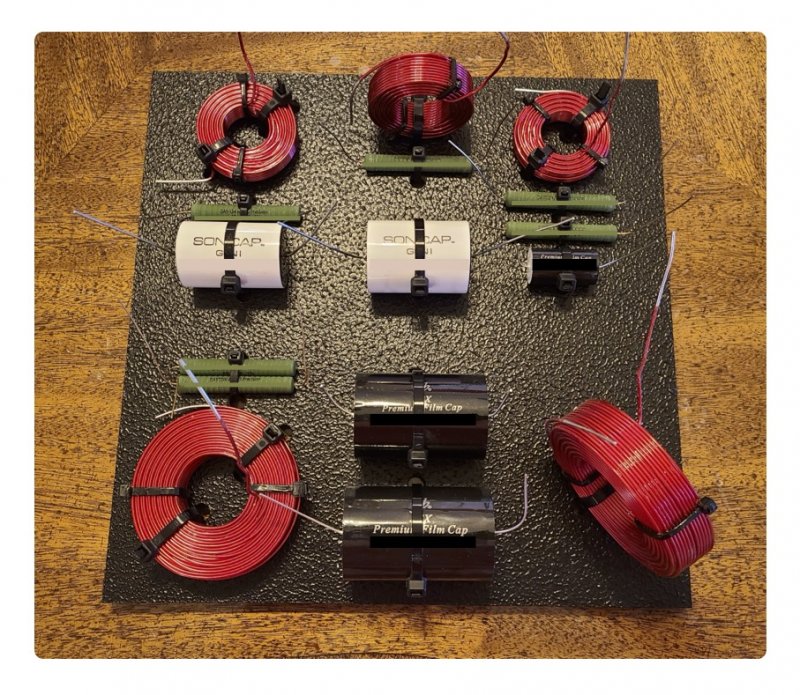
Stereophile review from 2012:
https://www.stereophile.com/content/wilson-audio-specialties-duette-loudspeaker
Specifications: Two-way, reflex-loaded bookshelf loudspeaker with separate crossover enclosure.
Drive-units: 8" cone woofer, 1" silk-dome tweeter.
Sensitivity: 90dB/W/m/kHz. (Note: Look at this spec compared to the measurements below from Danny at GR-Research)
Nominal impedance: 4 ohms. Minimum impedance: 3.96 ohms at 3.1kHz.
Recommended amplifier power: >20W.
Dimensions: 18.4" H by 9.4" W by 13.75" D. Weight: 39 lbs.
Finish: Automotive paints in non-metallic black, Diamond Black, Dark Titanium, Desert Silver, and Argento Silver Twelve.
Price: $13,900/pair plus $1795/pair for matching stands. Approximate number of dealers: 50.
Manufacturer: Wilson Audio Specialties, 2233 Mountain Vista Lane, Provo, UT 84606. Tel: (801) 377-2233. Fax: (801) 377-2282.
Web: www.wilsonaudio.com.
"Overall, however, the Wilson Audio Duettes produced a sound that allowed all the music I listened to during my visit to communicate very effectively.—John Atkinson"
===================
I own a pair of Wilson Audio Duette speakers. I found a pair after hearing them at a buddy’s home, who also owns a pair of Wilson Audio Alexia. I thought they were different, cool... sounded BIG. I like 2-way speakers... why not?
Living with them... the Duette are extremely "resolving"... so much "resolution" that I found I needed to listen to them way off axis... speakers spread far apart / pointed straight ahead. With it being a 2-way with 8" woofer, it’s unique. It plays BIG, and is well made... except for the crossover, and the fact that it wants to melt my face.
So, what to do? Well, I sent one of them to Danny Richie at GR-Research. I’ve dealt with Danny before and it’s been a pleasure. One thing Danny will do is measure the speaker you send him, tell you what’s wrong with it, and design a new crossover for it - for Free. There’s no fee for that... you just buy the parts from him and you get a schematic. Fair deal, no doubt.
What Danny found with the Duette is eye opening. The reason the speaker sounds so forward is because the crossover was designed with no baffle step compensation. See the measurements below and the big variance between the low end up thru the midrange volume / highs and explains why they sound so FORWARD and IN YOUR FACE.

So, a new crossover was designed... here is how that has turned out, so far. One issue with the front baffle of the speaker is actually the foam on the front, that is meant to "help". The circular cutout for the foam (not the felt around the tweeter) is contributing to some diffraction / unevenness. I’m going to play with building up the area around the tweeter to smooth that "step" on the front baffle. I’ll measure the difference and see if it helps.
New Measurements for the crossover designed by Danny Richie:
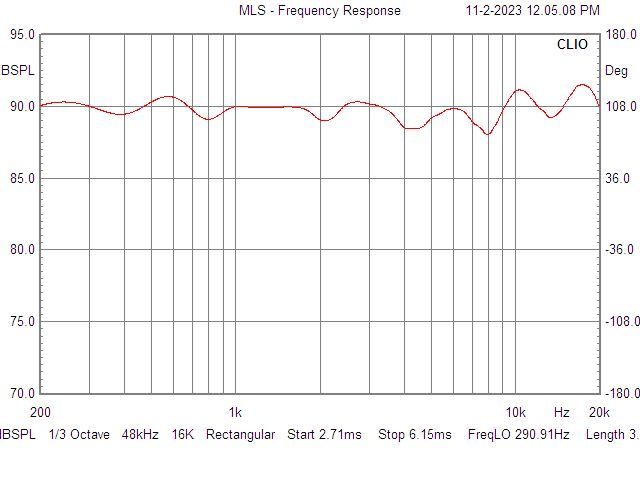
Old Vs New Crossover Measurement

New Crossover Driver Response
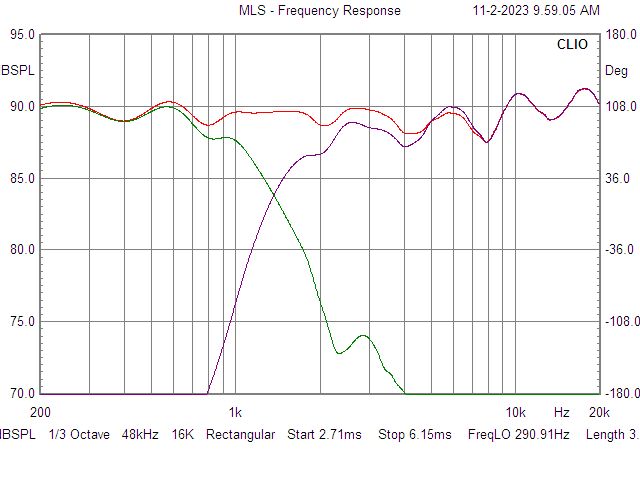
Spectral Decay
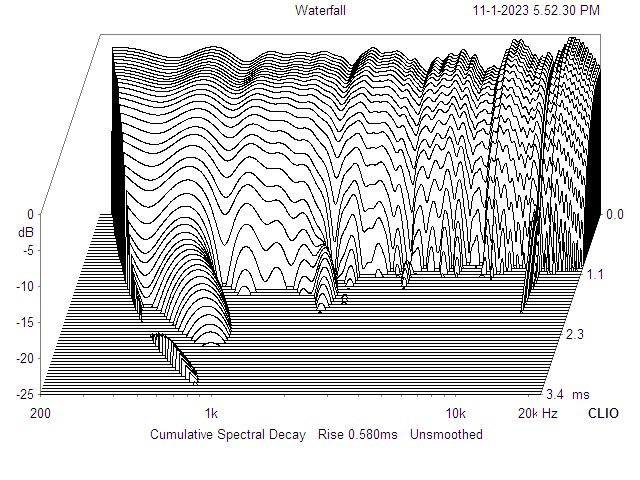
Issue with the foam around the tweeter...
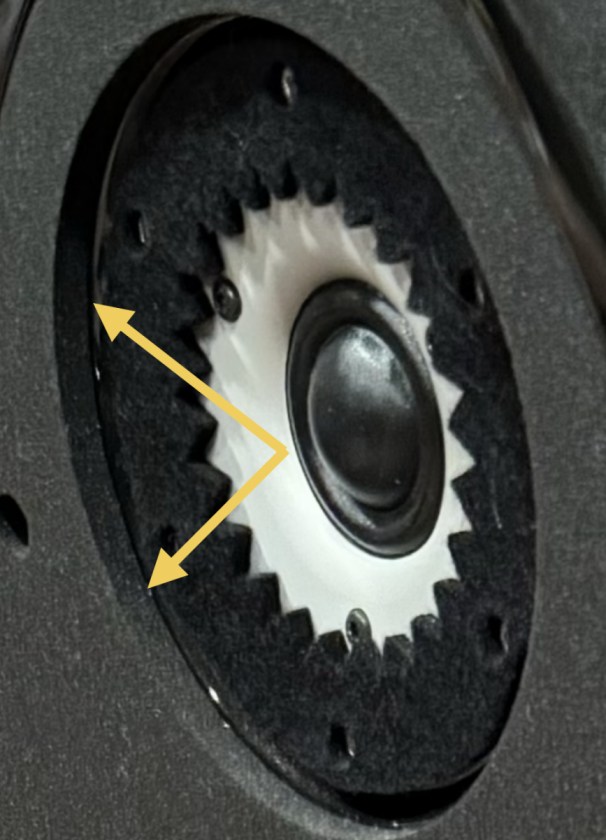
Another "Interesting" thing... there are 2 different umbilical cords for attaching the external Novel crossover to the Duette. The manual states the following about their use, and threatens warranty coverage if not used properly:

Umbilicals in Question... one for use with "Free Space" resistors and the other for use with "Near Wall" resistors. Different resistors are provided to adjust tweeter output.

So, Danny measured the 2 different umbilicals, to see whether there was a difference. Well, at least in terms of sound... there was ZERO difference.
The language in the manual and this measurement was disappointing, to be kind.
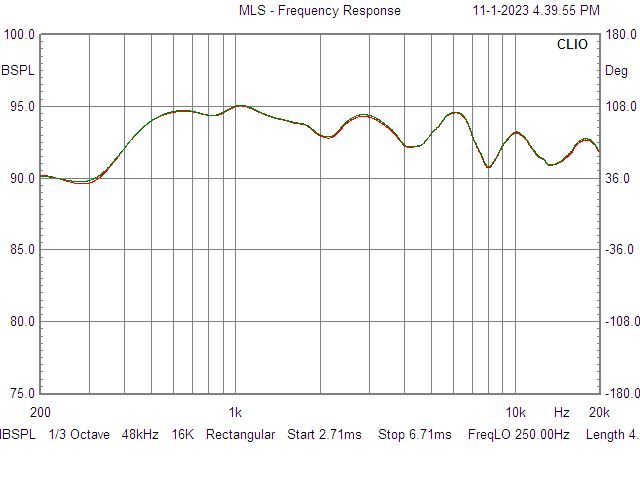
So, on to new crossovers. They are currently being built. I am going to make a custom enclosure for them as they will remain external from the Duette enclosure, like the original design. There will be significant differences in how they connect to the Duette, their orientation, etc. Here is the progress:

